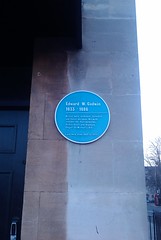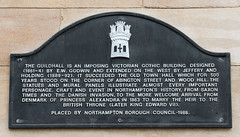Edward William Godwin


Edward William Godwin
(1833-1886)
Family tree
Commemorated on 3 plaques
Edward William Godwin 1833-1886 Bristol born architect, furniture and fabric designer responsible for the building of the Carriageworks, Stokes Croft, Wesbury-on-Trym village hall and restoration of St Mary Redcliffe Church lived here from 1862-1865
21 Portland Square, St Paul's, Bristol, United Kingdom where they lived
The Guildhall is an imposing Victorian Gothic building designed (1861-4) by E. W. Godwin and extended on the west by Jeffery and Holding (1889-91). It succeeded the Old Town Hall which for 500 years stood on the corner of Abington Street and Wood Hill. The statues and mural panels illustrate almost every important personage, craft and event in Northampton's history, from Saxon time and the Danish invasion, to the more welcome arrival from Denmark of Princess Alexandra in 1863 to marry the heir to the British throne (later King Edward VII).
2 Saint Giles' Square, Northampton, United Kingdom where they was
Dame Ellen Terry GBE 1847-1928 actress Edward William Godwin 1833-1886 architect-designer Edith Craig 1869-1947 theatre director and suffragette lived here Edward Gordon Craig CH 1872-1966 theatre director, designer and theorist was born here
23 Orchard Road, Stevenage, United Kingdom where they lived



